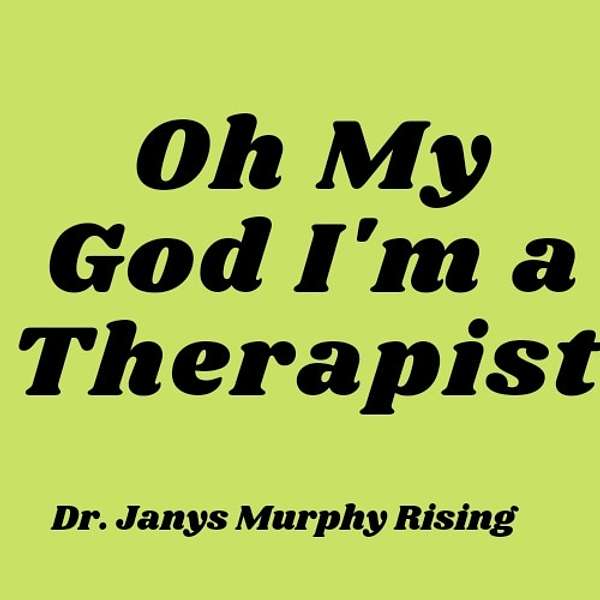
Oh My God I'm a Therapist
Oh My God I'm a Therapist
Body Centered Practice Part Five- Connecting with Discomfort
This episode is part one of a nine-part series of body-centered practices. Dr. Janys originally recorded this as part of a crisis counseling course. Their students kept asking to download it so here it is for anyone and everyone. Body-centered practices can be helpful in gaining resources for calming the nervous system. If you are looking for brief practices for personal use, resourcing for counseling, or for being a counselor- this will be of use to you! Transcript included.
*Content warning- this episode asks you to connect with something painful from your past as a way to work with discomfort. You can skip this or any body-centered practice episode that does not resonate with you.
In addition to being a therapist and a professor, Dr. Janys is certified as a yoga instructor and yoga therapist. In addition to using her own experience leading guided body-centered practices, they referenced the readings below to create the body-centered practices series:
Levine, P. (2008). Healing Trauma: A Pioneering Program for Restoring the Wisdom of Your Body. Sounds True.
Menakem, R. (2017). My Grandmother’s Hands: Racialized Trauma and Our Pathway to Mending Our Hearts and Bodies. Central Recovery Press.
Rothschild, B. (2000). The Body Remembers: The Psychophysiology of Trauma and Trauma Treatment. W.W. Norton and Company Inc.
If you like these practices, please share them, like this podcast where you listen, or support the show! Thanks for listening and be well!
Body centered practice five connecting with discomfort.
This exercise will require for you to think about something that was moderately painful in your past. Before you begin, take a moment to bring something into the space where you are doing this to help, say, help you return to present moment if you need to. This could be something with a strong but pleasant smell, such as coffee, if you like coffee, something that is comforting, like a blanket or a pillow, something that has a comforting smell. Go ahead and pause the recording and just find something that is a touchstone for you to anchor you as you need it.
Once you have your object, just take a couple of moments to breathe and either of you smell whatever your sense is for this object. To let yourself be resourced and comforted by this.
I invite you to either close your eyes or just soften your gaze.
And allow yourself to think of something that was painful in your past. This can be something that happened so long ago that it doesn't feel like it has a hold on you or it's something that maybe you've already worked through. Try not to pick the most traumatic or difficult thing. But have it be something that brought some pain so that you can practice the experience of connecting with your discomfort.
Once you bring the image to mind or have a felt sense of the image, since some people don't visualize.
Allow yourself to be there for a couple of seconds. And bring your focus to the most painful part of what happened to you. As you do notice, all the sensations in your body. Notice what thoughts, images and emotions arise without responding to them or getting worked up with them in any way.
And then without disengaging from the incident or from your body, practice breathing. Grounding. Resourcing, as we did in our last practice, or think about your touchstone and try to bring it into the picture or this felt sense of what happened to you.
And then. Try to let it go, either feel the incident just lifting from your body. Bringing in your resources, whether that's your breath or your grounding or the actual touchdown you brought with you.
See it go back into the past or fade.
And if you notice that what remains is anything that might be uncomfortable, your body might be sore or tight or you might feel strange, just simply bring yourself some comfort, either bringing your object if it's a blanket or bring your hands to that part of your body. And just be very compassionate with that part of yourself breathing in care. Reminding yourself that that happened a long time ago. And that you're here now and you're OK.
I encourage you to return to this practice again and again. Not because I want you to keep experiencing pain, but the more that you can bring in a resource that helps you settle and relax, or if you can practice bringing in imagery close into your body and then moving in a way, you're going to have more access to responding when things are uncomfortable, especially when you're working with clients.
Do any sort of resourcing that you need to do to move back to the rest of your day if you need to stop and take some notes to discharge what came up for you. You can also go back and do one of the previous body centered practices to help you as a resource.
See if you can bring if there was any resourcing to this with you to the rest of your day.
And just allow anything that was discomfort to fade away until you're ready to lead, ready to consciously do this again.
